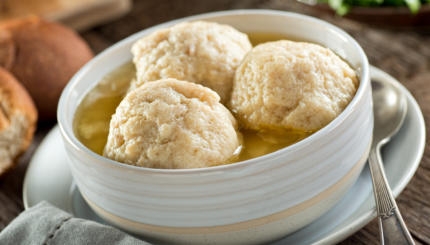The Reform rabbinical association, the Central Conference of American Rabbis (CCAR), has produced several volumes for Reform lay people seeking guidance on how to observe the many aspects of Jewish life that are based in the home and family rather than the synagogue. The following CCAR statement is excerpted with permission from Gates of Mitzvah: A Guide to the Jewish Life Cycle, published in 1979. More recent publications have more actively encouraged observance of some or all of the traditional restrictions by contemporary Reform Jews.
No guide for Jewish living would be complete if it failed to address the issue of kashrut, i.e., the fitness of certain foods according to Jewish tradition. It is reasonable to ask the Reform Jew to study and consider kashrut so as to develop a valid personal position.
The Reform movement has, for the most part, ignored the question of the relevance of the dietary laws. W. Gunther Plaut [a prominent Canadian Reform rabbi] writes of kashrut, “The almost total silence of Reform literature on this subject is witness to the fact that it no longer was of real concern to the liberal leadership.” The Reform position was set out in the Pittsburgh Platform of 1885, “We hold that all such Mosaic and Rabbinical laws as regulate diet, priestly purity, and dress originated in ages and under the influence of ideas altogether foreign to our present mental and spiritual state. They fail to impress the modern Jew with a spirit of priestly holiness; their observance in our days is apt rather to obstruct than to further modern spiritual elevation.”
Although this blanket rejection of the dietary laws as outmoded represented the “official” position of the Reform movement through most of a century, it did not prevent individual Reform Jews and Reform congregations from adopting certain of the dietary laws for a variety of reasons, including the desire not to offend traditional relatives or guests.
In attempting to evolve a personal position on kashrut, the Reform Jew or the Reform Jewish family should understand that there are several options, e.g., abstention from pork products and/or shellfish, or perhaps adding to this abstention the separation of milk and meat; these practices might be observed in the home and not when eating out; or they might be observed all the time. Or one might opt to eat only kosher meat or even to adopt some form of vegetarianism so as to avoid the necessity of taking a life. (This would be in consonance with the principle of tsa’ar ba’alei hayyim, prevention of pain or cruelty to animals.) The range of options available to the Reform Jew is from full observance of the biblical and rabbinic regulations to total nonobservance. Reform Judaism does not take an “all or nothing” approach.
In the Torah, the Jewish people is commanded to observe the dietary laws as a means of making it kadosh, holy. Holiness has the dual sense of inner hallowing and outward separateness. The idea of sanctifying and imposing discipline on the most basic and unavoidable act of human behavior, eating, is one of the reasons that may lead a person to adopt some form of kashrut. Among the other reasons that one may find compelling are (1) identification and solidarity with the worldwide Jewish community, (2) the ethical discipline of avoiding certain foods or limiting one’s appetite because of the growing scarcity of food in parts of the world, (3) the avoidance of certain foods that are traditionally obnoxious to Jews, e.g., pork, which may provide a sense of identification with past generations and their struggle to remain Jews, (4) the authority of ancient biblical and rabbinic injunctions, and (5) the desire to have a home in which any Jew might feel free to eat.
One or more of these reasons as well as others might influence certain Reform Jews to adopt some of the dietary regulations as a mitzvah, while others may remain satisfied with the position articulated in the Pittsburgh Platform. However, the fact that kashrut was for so many centuries an essential part of Judaism, and that so many Jews gave their lives for it, should move Reform Jews to study it and to consider whether or not it would add kedushah [holiness] to their homes and their lives.
kosher
Pronounced: KOH-sher, Origin: Hebrew, adhering to kashrut, the traditional Jewish dietary laws.



